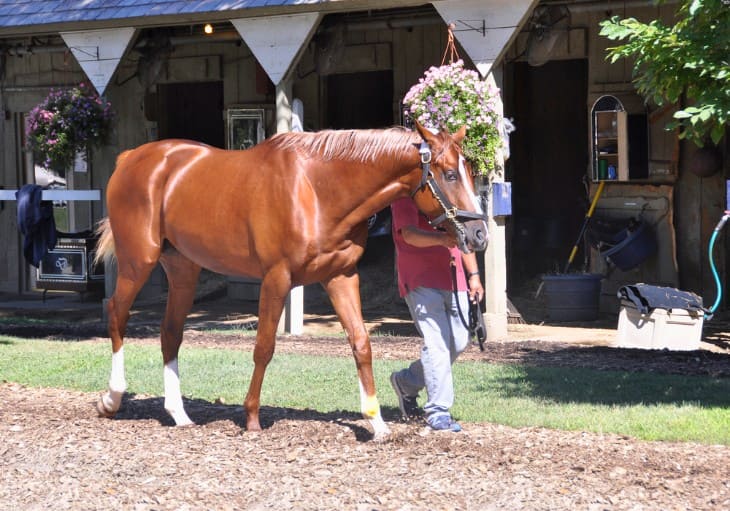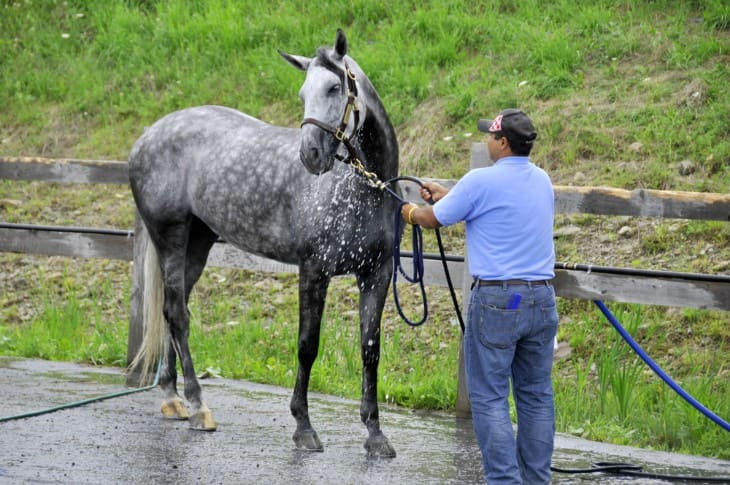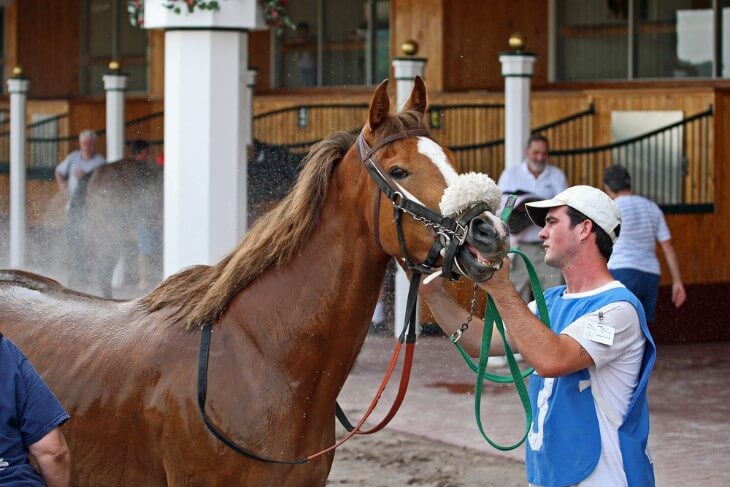- Horse Racing and the Crucial Role of Trainers
- The Evolution of Horse Training Techniques in Racing
- The Art of Developing a Champion: Selecting and Acquiring Racehorses
- Training Foundations: Building Strength, Stamina, and Speed
- Nurturing Champions: Nutrition and Care for Racehorses
- Fine-Tuning the Athlete: Specialized Training Strategies
- Mental Conditioning: Preparing Horses for High-Stakes Races
- In the Saddle: The Trainer's Impact on Jockey-Horse Partnerships
- Race Selection and Planning: Maximizing Opportunities for Success
- Conclusion
Horse Racing and the Crucial Role of Trainers
Trainers shoulder monumental responsibility for unlocking each horse's potential and sculpting athletic prowess to triumph over rivals. Success requires extensive expertise reading subtle physical and behavioral cues when custom-tailoring rigorous fitness regimens. A shared language emerges between trainer and trainee grounded in patience and mutual respect. The fruits of this bond manifest as spellbinding, gutsy performances on racing's grand stages.
- Training racehorses spans long before horses even set foot on a track, beginning with early assessments of conformation, bloodlines and temperament.
- Ireland's Master of Ballydoyle Vincent O’Brien revolutionized the training approach from a regimental style to nurturing horses as individuals, a methodology still followed today.
- Trainers log 16+ hour days, 7 days a week to orchestrate every aspect of their operation from staff direction to race planning and horse care.
- Top trainers can command training fees from owners upwards of $100+ per day and receive 5-10% of major race earnings, which can equate to millions.
The Evolution of Horse Training Techniques in Racing
Centuries ago, training methodology centered on brute force to overpower spirited horses into compliance. Over time, increased understanding of physiology and psychology allowed more enlightened methods emphasizing patience over punishment.
Modern training practices promote two-way communication between horse and handler built on feel and timing. Motivation arises from developing horses’ natural competitive drive rather than instilling fear. Customized regimens prioritize gradual strength and stamina development to prevent injury to growing bones and joints. Trainers tailor approaches for quirky individuals realizing no amount of talent can overcome an unhappy athlete.
- Equine heart rate monitors now help trainers assess fitness and identify signs of fatigue and overexertion.
- Underwater treadmills ease impact, allowing horses to maintain conditioning while healing from injuries.
- Many trainers now limit intensive early training for young horses to reduce musculoskeletal damage and maximize longevity.
- Natural horsemanship techniques encourage cooperative participation from horses as partners instead of dictating demands.
The Art of Developing a Champion: Selecting and Acquiring Racehorses
Identifying racing potential requires masterful scrutiny of bloodlines, conformation, and temperament best matching an owner's objectives - whether classsic success or profitable consistency. Trainers also assess commercial viability for selling on developed talent.
The alchemy of pedigree analysis seeks superior genetic inheritance of anatomical traits like lung capacity and lean muscle composition. Various conformation aspects indicate key abilities - a deep chest houses a large heart while sloping shoulders allow longer stride length. Trainers also test reactions to stimuli when evaluating disposition, prioritizing controllable mental fortitude.
- North American yearlings sell at public auction each year for an average $50,000 but elite prospects command $500,000+ price tags.
- Breeding farms invest heavily in top stallions, charging up to $200,000+ per mating with the hope of producing more champions.
- Once selected, most young horses are first taught to accept saddle, bridle and rider through round pen techniques before gradually adding reins and bit.
- Establishing mutual affection and consistency helps timid yearlings gain confidence in human leadership during the assimilation process.
Training Foundations: Building Strength, Stamina, and Speed
Instilling athletic attributes without compromising growing bones or soft tissues demands patient, progressive development. Following veterinary guidance for skeletal maturity milestones allows designing customized regimens balancing fitness with welfare.
Initial long, steady gallops over varying terrain focus on bone density, proper movement biomechanics and aerobic conditioning. Subsequent intervals develop sustained speed capacity and efficient oxygen processing while shorter bursts target raw power. Consistently setting new performance bars challenges competitive desire but recovery periods teach patience. The ultimate winner learns when to unleash every ounce of effort through exquisite communication with their human partner.
- Switzerland's famed St. Moritz track with varying elevations and footing helps horses build comprehensive fitness.
- Aquatic treadmills alleviate strain on joints while maintaining respiratory and cardiovascular gains.
- High-speed cameras reveal minute gait inefficiencies not discernible to the naked eye so trainers can tailor correction strategies targeting specific limb coordination.
- Scientific feed formulas provide exact nutritional requirements but some trainers still swear by adding Guinness beer to spark appetite and vigor.

Nurturing Champions: Nutrition and Care for Racehorses
Housing growing adolescent athletes demands meticulously orchestrated care centered on preventing injury and illness through rest, diet and therapy. Trainers oversee each individual's custom nutritional program ensuring proper bone and muscle development to support intense exercise.
Staff monitor horses 24/7 for signs of fatigue, soreness or stress that signal pending issues sidelining training. Technological tools like wireless heart monitors facilitate early diagnosis of potential concerns. Consistent daily schedules establish Ritual allowing detailed assessment during feeds, baths and tack-ups. Grooms form special bonds noticing subtle nuances in behavior that may warrant interventions allowing horses to thrive.
- Foals typically grow one to two pounds per day during their first year, demanding precise nutritional balance.
- Therapeutic laser and magnetic devices treat sore muscles and ligaments without drugs.
- Climate-controlled equine water treadmills provide low-impact therapy aiding rehabilitation from injuries.
- Some trainers employ psychologists to assess temperament using choice and reward experiments to determine effective motivation strategies.
Fine-Tuning the Athlete: Specialized Training Strategies
Mastering the intricacies of a world-class athlete fine-tunes the marriage between inherent talent and preparation. Trainers artfully deepen reserves of sustained power through reinventing routines to avoid stagnation. Applying specific exercises targeting areas for refinement compliments foundational development.
Interval and hill training build physical robustness while equipment like chaser gates and irradiation lasers hone tactical quickness translating to extra inches off the pace. Schooling over varied obstacles improves agility and stride efficiency critical to conserve energy reserves for the long haul. Trainers constantly tweak regimens based on workout analysis looking to shave off fractions of a second - minute margins that decide the glorious difference between first and fourth.
- Underwater treadmills build bone density and muscular strength with 60% less weight impacting limbs compared to land.
- Hyperbaric chambers increase blood oxygen levels to speed tissue recovery following strenuous efforts.
- Therapeutic ultrasound and magnetic field treatments reduce inflammation allowing horses to maintain progress through minor injuries.
- Cold saltwater spa hydrotherapy invigorates circulation, reducing muscle soreness to enable quicker turnaround between competitions.
Mental Conditioning: Preparing Horses for High-Stakes Races
Roaring crowds and high adrenaline atmospheres of major events can overwhelm uninitiated equine athletes. Race pressure tests even seasoned veterans. Success hinges on reinforcing mechanisms silencing disruptive fight-or-flight responses allowing focus amid chaos.
Sensory and environmental desensitization begins early, exposing impressionable youngsters to sights, sounds and sensations of the track. Stabling near major oval training grounds allows observing race flow without being overwhelmed by proximity as prep advances. Simulated competition against other horses fosters a winning mentality. Confidence arises from measured exposure followed by mastery. Come post time, stimulus fades to background allowing full concentration on the trainer’s final pep talk.
- White noise machines in stalls acclimate highly reactive horses to ambient sounds of major events.
- Equine appeasing pheromones reduce stress responses when introduced to new experiences.
- Miniature wireless video cameras mounted on halters allow remote observation of horse behavior while training.
- Visualization and meditation techniques reinforce mental sharpness skills utilized by human athletes.

In the Saddle: The Trainer's Impact on Jockey-Horse Partnerships
A jockey and horse share a kinetic conversation conveyed through subtle physical cues and innate feel. Trainers facilitate this rapport by deliberating each pairing - matching complementary traits while fine-tuning areas needing adjustment.
Trainers scout riding styles assessing tempo, assertiveness and adaptability against a horse’s tendencies and prefences. Spirited mounts prone to over-exuberance may thrive with a jockey exerting calming influence. Massaging egos and mediating disputes arises when stubborn personalities conflict. At times, orchestrating a switch realizes the best in both. Regardless of any drama, the trainer’s wisdom focusing cooperative potential guides the road to winner’s circle glory.
- Replacing an injured jockey often has negative psychological impact on horses accustomed to their familiar partner.
- Jockeys spend extensive non-riding time with assigned mounts, reinforcing rapport through hand grazing, bathing and massage.
- Equine athletes achieve higher performance when paired with a jockey whose kinetic style synchronizes with the horse's preferred rhythm.
- Gifting a jockey with the mount on a champion horse can gain valuable favor for future promising young prospects.
Race Selection and Planning: Maximizing Opportunities for Success
Plotting strategic racing campaigns resembles a military operation analyzing variables seeking any potential edge within strict regulatory confines. Sophisticated databases track extensive metrics on horses and tracks while algorithms predict model race pace scenarios.
Trainers interpret data through the lens of experience, intuition and familiarity with each individual. Surface, distance and running style suitability provide a starting point. Then scrutiny shifts to current form against projected fields aspecting pace, tactical speed and stamina reserves. Peaking fitness for key targets allows managing seasonal objectives for present demands and future potential. In racing, even the most meticulous planning meets the whims of chance but preparation stacks the odds favorably.
- Software programs simulate alternative race strategies for specific horses under various track conditions and post positions.
- Sudden hot streaks may warrant supplementing entry fees for elevated stakes races to capitalize on peaked form.
- The prestigious Breeders Cup Championships allow non-winners automatic entry for having placed second or third in designated prep races worldwide.
- Recent past performance history carries significant handicapping weight compared to early season or two year old results.
Conclusion
Behind racing's grandeur lies a gritty, unglamorous world with trainers at its core. Their supreme devotion and work ethic form the bedrock supporting magnificent equine athletes in pursuit of glory. Through an almost spiritual relationship built on trust and respect, horse and trainer channel collaborative power capable of heroics. On racing's biggest days when the world watches in awe as dreams are defined by the flirtatious lashes of victory and heartbreak, the trainer stands proud knowing the depths of the journey traveled.








